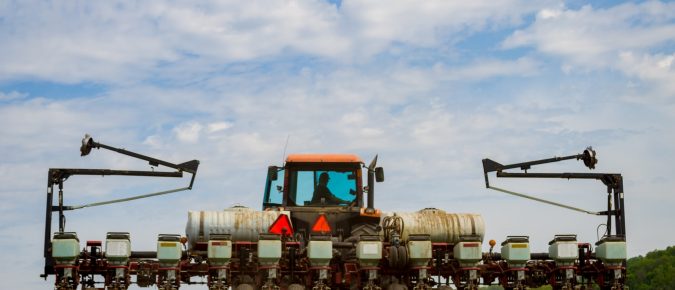Articles
Field Notes Episode 8: Ag, Water, and Processing Vegetables
Guest host Guolong Liang, outreach specialist for the Agriculture Water Quality Program of Extension in the Central Sands of Wisconsin, talks with UW-Madison Horticulture Professor and Extension Specialist Jed Colquhoun, John Ruzicka of Guth Farms in Bancroft, Wisconsin and Dylan Moore, a Seneca Foods Field Representative, about the use of cover crops and no-till to reduce nutrient runoff in canning and processing vegetables.
How much do soil health practices increase soil carbon?
Right now, there are at least a dozen carbon credit companies willing to pay farmers a range of prices to add conservation practices, like cover crops and no-till planting, to their annual crop production systems. Although these companies are paying farmers to implement the conservation practice, what they are really investing in is the additional carbon they expect to be stored (sequestered) in the soil through implementing the practice.
Focus on forage storage management
The fourth Focus on Forage webinar in the 2023 series, Focus on Storage aims to provide WI farms and agricultural professionals with current research-based recommendations regarding hay bale and hay baleage storage and management.
Focus on alternative forages
The third Focus on Forage webinar in the 2023 series features alternative forage production information. Presenters are Bill Halfman, UW-Madison Division of Extension Beef Outreach Specialist; Dr. John Jones, UW Madison Soil Scientist; and Jason Cavadini, UW-Madison Division of Extension Grazing Outreach Specialist.
Estimating Custom Rate for 2023 Wisconsin Farm Operations
As the 2023 crop season get started, landowners and custom service providers are negotiating custom rates, but the newest Custom Rate Guide for Wisconsin is from 2020[1]. Prices have increased a lot over the past three years.
Emerging Crops Lunch and Learn: Day-Neutral Strawberries and Table Grapes
Amaya Atucha, UW-Madison Associate Professor and Extension Fruit Crop Specialist, shares the latest research on day-neutral strawberries and table grapes at UW.
The Cutting Edge Podcast Episode #41: Compeer Financial
Co-hosted with Jacob Grace from the Savanna Institute, this episode features Paul Dietmann, Senior Lending Officer in the Emerging Markets Loan Program at Compeer Financial, who works with farmers marketing their products directly to consumers or in value-added agriculture. Resources Compeer Financial Savanna Institute
Spring pasture weed management
Many beef and small ruminant producers are looking forward to pastures greening up in Wisconsin. In some pastures that will include troublesome weeds. Management timing for weed control is narrow for some species and can be the difference between success and a waste of time and money.
Planter prep and spring soil management
The webinar was designed to assist farms and agronomists in their decision-making regarding timing of spring tillage and planting activities and to properly prepare planting equipment for optimal in-field effectiveness.
Focus on alfalfa: Optimizing alfalfa production in Wisconsin
The second Focus on Forage session of 2023, Focus on Alfalfa, features Dr. Mark Renz, UW Professor and Extension Specialist; Steven Okonek, Division of Extension Crops/Soils Educator; Mike Bertram, Superintendent @ Arlington Research Station, and Dr. John Jones, UW Soil Science. The webinar was designed to assist farms and agronomists in their alfalfa management decision-making […]














